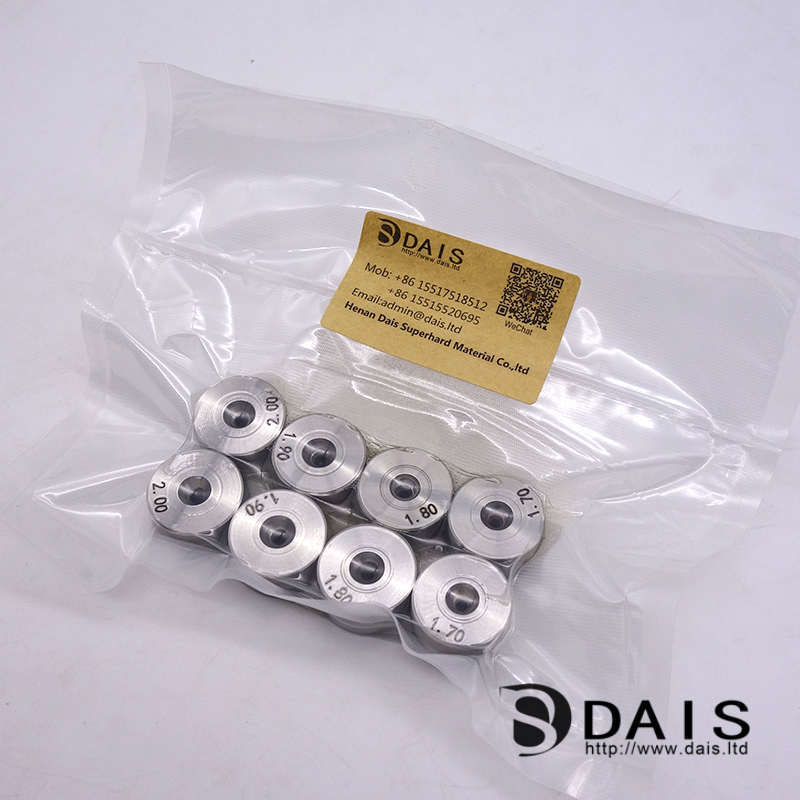Search

ADD:Building 123, Phase 3, Enterprise Base, No. 1 Lianhua Street, High-tech Industrial Development Zone, Zhengzhou, Henan, China
MOB.: +86-15517518512
MOB.: +86-15515520695
E-MAIL: admin@dais.ltd

The specific steps of repairing wire drawing dies According to statistics, the consumption of dies in my country's machinery processing industry alone is five times the total price of machine tools. It can be seen that the large consumption of molds not only directly increases production costs, but also causes a large number of production lines to stop production frequently due to frequent replacement of molds, resulting in greater economic losses. The mold repair technology undoubtedly enhances the life of the wire drawing die, and has good economic benefits. It can be used to strengthen and repair the surface of various iron-based alloys and other metal materials, molds and workpieces, and greatly improve the service life. What we need to pay attention to here is: although the machine will issue an alarm when the operation is wrong, it may occasionally burn out pits on the surface of the mold! So be sure to clarify the specific steps for repairing the wire drawing mold: 1. Clean up: do the repairing at the place that needs to be repaired. Simple cleaning to remove oil stains and impurities, otherwise there will be poor power supply and sparks splashing during the repair process. 2. Rolling rate: The maximum rotation speed of welding is that the pulse output current forms a close arrangement of fusion junctions on the repair material, and the rotation speed should not be too fast, otherwise there will be a small amount of repair material peeling and small pores after repairing and polishing. 3 . Contact point between welding torch and mold: The smaller the contact area between the welding torch and the repair material, the better the pressure is, the greater the current density passing through in an instant (the more concentrated the current is), the greater the heat of the welding point, and the better the bonding degree of the repair material. . The power data shown on the shell of the supplementary material is the power requirement when the electrode rod of the φ5mm standard welding torch is in contact with the flat supplementary material. The larger the contact area of the welding head with the same power, the dispersion of the current and the unsatisfactory effect after the repair. On the contrary, if the contact area is too small, the repair During the process, it is easy to cause the filling material to melt and splash and the surface to be uneven. 4. Posture and pressure: When repairing, it is better to set the welding torch and the mold surface at 45 degrees, and apply a certain pressure to the welding torch. The pressure depends on the roughness of the defect surface. If it is not smooth, the surface with more impurities should use more force. 5. Complex cavity: precise power is used when repairing fine, multi-angular and complex surfaces. It is better to repair thin materials multiple times. The conventional state is suitable for defects with a relatively large amount of repair. 6. Oxidized surface repair: Process: clean up impurities--->remove oxide layer--->edge repair with low power--->fill and level---> Polishing 1) Before repairing the oxidation mold, the nitride layer must be removed with a power tool, and the supplementary material is directly welded to the steel substrate, otherwise there is an oxide layer between the supplementary material and the substrate, which is easy to peel off. 2) Use low power and thin materials as far as possible to repair the edge part, which can reduce and reduce edge marks caused by repairing heat. 7. After the repair point is polished, the outer ring has a slight protrusion. The reason is that the heat generated during repair will harden the workpiece. The material with good quenching characteristics is especially obvious. The edge part is repaired with low power and thin material to avoid this phenomenon (method Refer to Oxidation Mold Repair). 8. The concave after repair and polishing is caused by the fact that the hardness of the supplementary material is lower than that of the base material. Selecting the supplementary material with a hardness similar to that of the base material can avoid the source: how to repair the wire drawing die